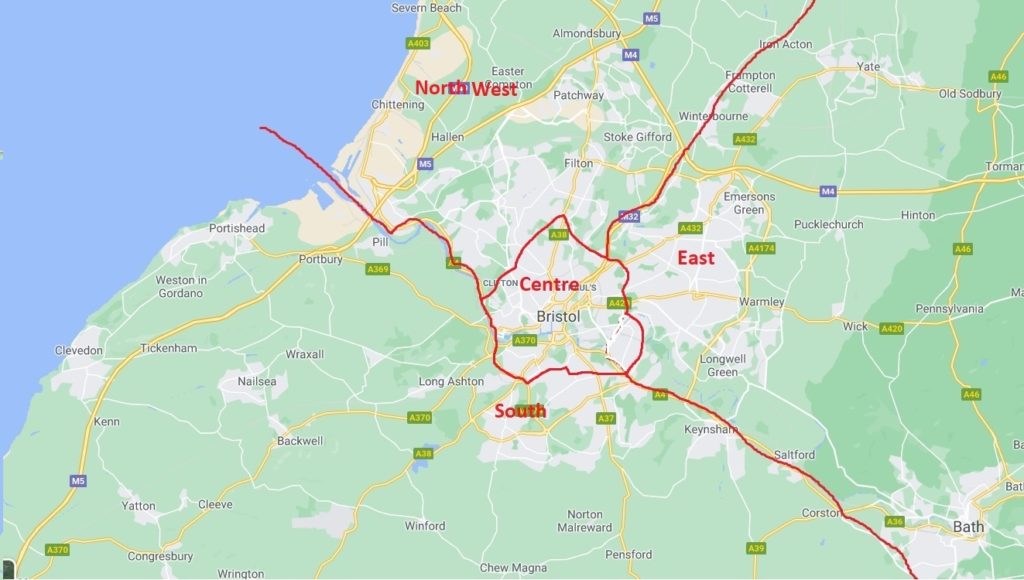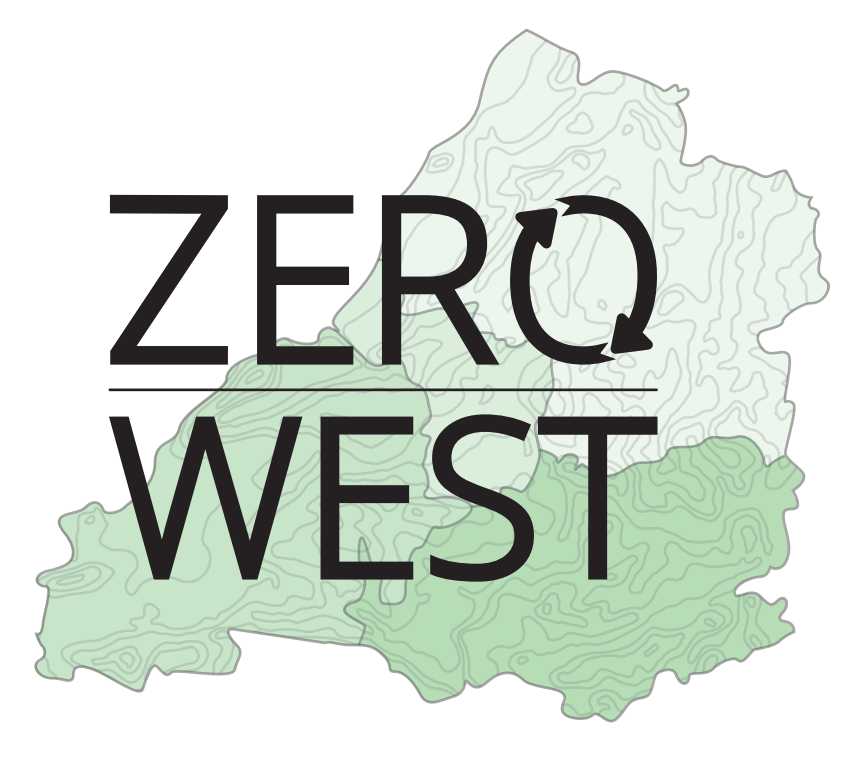
Have a say in one of our Stakeholder Meetings, one for each part of the city and surrounding area (see map below):
- East – 12.30pm to 2.30pm Monday 11th Jan
- Central – 5pm to 7pm Monday 11th Jan
- Northwest – 10am to 12pm Tuesday 12th Jan
- South – 10am to 12pm Wednesday 13th Jan
Or join our stakeholder reference panel.

We are working with Transport for Greater Bristol Alliance to re-imagine what our transport system could be like in Bristol. We not only want the walking, cycling and public transport described in the 2016 Good Transport Plan for Bristol, we believe that now is the right time to ask for more – for a coherent, city-wide traffic management plan, and for rapid transit that enables us to really shift away from reliance on private cars.
We believe that to get to zero carbon by 2030, and for everyone to have good access to mobility, we need to shift the trajectory of Bristol’s transport system.
Vision
We imagine a city in which everyone who walks and cycles feels safe on the streets, neighbourhoods are green and quiet and people know their neighbours, children can play safely, we breathe clean air, and we hear birdsong more than traffic. A city where everyone can get to where they need to affordably and quickly, whether they live in the centre or the outskirts. Where people who can’t afford to own a car can get to places of employment, and access the town centre. Where active travel and public transport are the obvious choice, and community mobility services are accessible to everyone. Achieving all of this would take us a long way towards achieving our air quality and climate emergency targets.
This requires a radical shift in mindset away from the dominance of the private car.
How do we do this?
People get priority
- Liveable neighbourhoods where streets are for people, and cars have access-only rather than through routes. This makes neighbourhoods quieter and friendlier, improves business for local shops and cafes, and increases trust and knowing neighbours.
- Making it pleasant, safe and convenient to walk or cycle, or use a wheelchair or micro-mobility e.g. e-scooters. This includes surface-level crossings rather than bridges and underpasses; filtered permeability allowing walking and cycling through routes that are access-only for cars.
- Cut out through traffic while maintaining resident access.
Public transport is the obvious convenient option (other than walking cycling, wheelchair using, puschair pushing and other forms of active/micromobility)
- Transport hubs allow easy transfer between different forms of transport, with integrated ticketing, maps and live updates.
- Roadspace is reallocated to public transport (busses, taxis and trams), from cars. This provides a reliable, efficient and speedy tram service on main routes, makes buses too more reliable, faster and cheaper, and makes public transport the quicker more relaxing option for everyone.
- Suburban railways are improved and increased, and connected up with bus/tram/taxi and cycling and walking routes.
Car use and ownership is a last resort
- Selecting a few major through-routes for cars, and allowing cars to get to most parts of the city as access-only, through a redefined and clearer road hierarchy and closure of rat runs.
- Car rental, including car clubs and shared ownership options are convenient and affordable
- Parking is managed so that kerbside space can be used for the benefit of everyone – not just car owners.
- HGV and large vehicles provided with traffic-calming directions via Google maps etc..
We’re exploring more detail on the principles and the how of Bristol’s transport plans. To get involved, please join our stakeholder reference panel or come to one of our engagement events in the new year.

